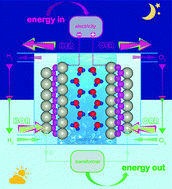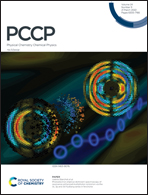A novel PdC monolayer with fully dispersed Pd atoms and a rigid carbon backbone: an intrinsic versatile electrocatalyst for overall water splitting and the corresponding reverse reaction†
Abstract
The electrocatalytic overall water splitting and the corresponding reverse reaction play a vital role in future renewable energy systems and, hence, are frontiers of catalysis research. In this work, we identify a heretofore unknown two-dimensional palladium carbide using the structure swarm intelligence algorithm. The proposed monolayer, named α-PdC, consists of fully dispersed Pd atoms and a rigid carbon backbone, exhibiting high mechanical, dynamical, and thermal stability with desirable electrical conductivity. Further calculations show that the proposed monolayer is an intrinsic multifunctional electrocatalyst. It possesses an excellent catalytic performance toward the hydrogen evolution reaction (HER), the oxygen evolution reaction (OER), and the oxygen reduction reaction (ORR) with low overpotentials. Specifically, the overpotential for the HER is only −0.01 V, and the significantly low activation energy barrier (0.16 eV) on α-PdC elucidates the fast kinetics. Moreover, α-PdC could also be highly active towards the OER and ORR with comparable overpotentials (0.38 and 0.27 V, respectively). This study identifies an intrinsic versatile electrocatalyst with potential applications in the fields of energy conversion and storage.



 Please wait while we load your content...
Please wait while we load your content...